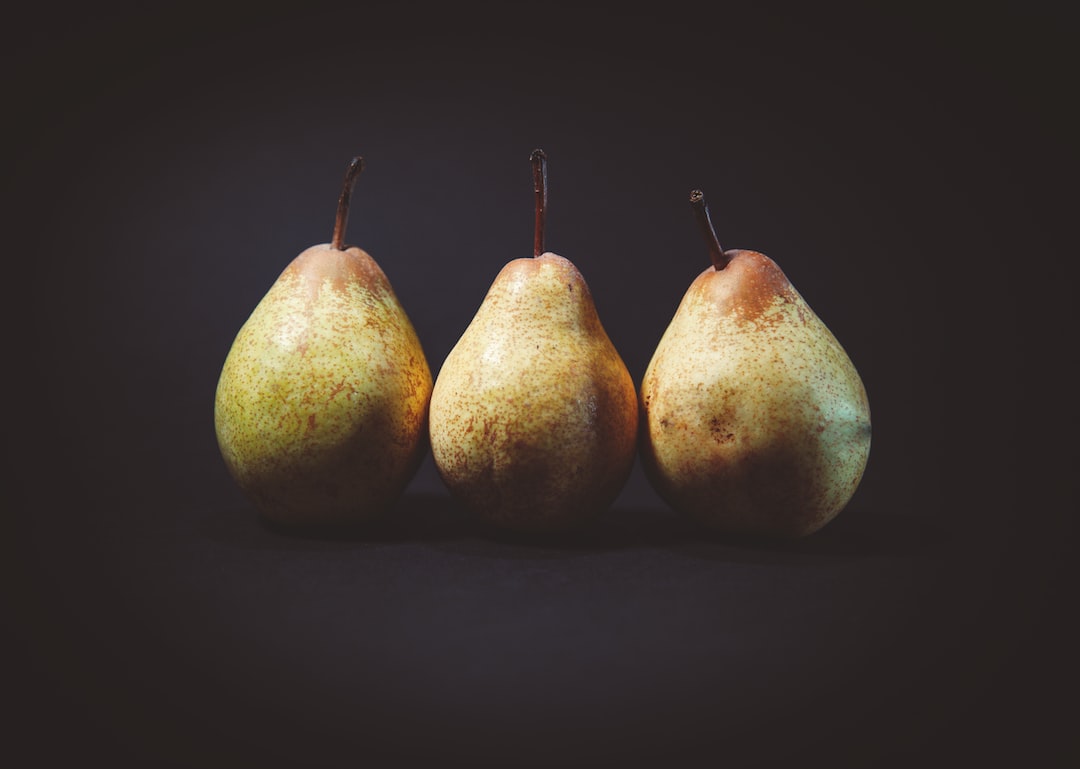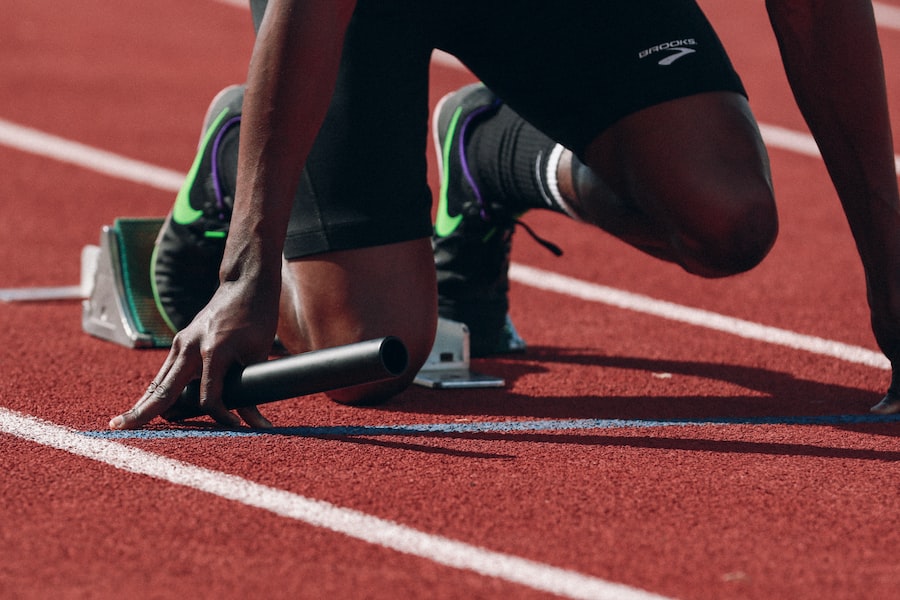When to Harvest Pears: A Guide to Picking Perfectly Ripe Pears

Understanding the ripening process of pears is crucial for anyone involved in the cultivation, harvesting, or consumption of this popular fruit. Pears are unique in that they do not ripen well on the tree, and instead require post-harvest ripening to reach their optimal flavor and texture. By understanding the stages of pear ripening, the factors that affect ripening, and how to determine the best time to harvest pears, individuals can ensure they enjoy the perfect pear every time.
Key Takeaways
- Understanding the ripening process of pears is important for harvesting and enjoying them at their best.
- Factors that affect pear ripening include temperature, humidity, and ethylene gas.
- Signs of ripeness to look for in pears include color, texture, and aroma.
- Determining the best time to harvest pears involves monitoring their growth and checking for ripeness indicators.
- Tips for testing pear ripeness include gently pressing the flesh and checking the stem for looseness.
Understanding the ripening process of pears
Pears go through several stages of ripening before they are ready to be consumed. These stages include the pre-ripening stage, the ripening stage, and the over-ripening stage. During the pre-ripening stage, pears are hard and have a green color. As they enter the ripening stage, they begin to soften and change color, usually from green to yellow or red. The over-ripening stage occurs when pears become too soft and mushy, with brown spots or bruises.
Ethylene is a key hormone that plays a crucial role in pear ripening. Ethylene is naturally produced by fruits as they ripen and acts as a signal for other fruits to begin their own ripening process. In pears, ethylene triggers the production of enzymes that break down cell walls, leading to softening and changes in color and flavor. Understanding the role of ethylene in pear ripening can help individuals manipulate the ripening process to achieve desired results.
Factors that affect pear ripening
Several factors can affect the ripening process of pears. Environmental factors such as temperature, humidity, and exposure to light can all impact how quickly or slowly pears ripen. Pears stored at higher temperatures will ripen faster than those stored at lower temperatures. Similarly, pears stored in high humidity environments will ripen faster than those stored in low humidity environments. Exposure to light can also affect the ripening process, with pears stored in darkness ripening more slowly than those exposed to light.
Cultivar-specific factors can also influence pear ripening. Different pear varieties have different ripening characteristics, with some varieties naturally ripening faster than others. Understanding the specific ripening characteristics of different pear cultivars can help individuals determine the best time to harvest and consume them.
Signs of ripeness to look for in pears
| Signs of Ripeness | Description |
|---|---|
| Color | Pears should have a uniform color. Green pears are not yet ripe, while yellow or brown pears are overripe. |
| Texture | The flesh of a ripe pear should be slightly soft to the touch, but not mushy. |
| Aroma | Ripe pears should have a sweet, fruity aroma. |
| Stem | The stem of a ripe pear should be slightly loose from the fruit. |
| Pressure Test | Gently press the neck of the pear with your thumb. If it gives slightly, it is ripe and ready to eat. |
There are several signs of ripeness to look for when determining if a pear is ready to be consumed. Visual cues include changes in color, with pears transitioning from green to yellow or red as they ripen. Pears should also have a smooth and blemish-free skin, without any bruises or brown spots.
Texture and firmness are also important indicators of ripeness. Pears should yield slightly to gentle pressure when squeezed, but should not be too soft or mushy. The texture should be smooth and creamy, without any graininess.
Aroma is another important factor to consider when determining pear ripeness. Ripe pears will have a sweet and fragrant aroma, while unripe pears will have little to no scent.
How to determine the best time to harvest pears
Timing is crucial when it comes to harvesting pears for optimal flavor and texture. Pears should be harvested when they are mature but not fully ripe. This allows for post-harvest ripening to occur, resulting in pears that are sweet, juicy, and flavorful.
Harvesting methods can vary depending on the specific pear variety and growing conditions. In general, pears should be gently twisted or lifted from the tree rather than pulled or tugged. This helps prevent damage to the fruit and ensures that it will ripen properly.
Tips for testing pear ripeness

There are several simple tests that can be used to determine pear ripeness. The first is the “thumb test,” where gentle pressure is applied to the neck of the pear with the thumb. If the pear yields slightly to pressure, it is ripe and ready to eat. Another test is the “taste test,” where a small slice of the pear is eaten to assess its flavor and sweetness.
When testing for ripeness, it is important to avoid common mistakes. One common mistake is relying solely on color as an indicator of ripeness. While color can be a helpful clue, it is not always a reliable indicator of ripeness. Another mistake is waiting too long to harvest pears, resulting in over-ripened fruit that is mushy and unappetizing.
Harvesting pears for optimal flavor and texture
Harvesting pears for optimal flavor and texture requires following best practices. Pears should be harvested when they are mature but not fully ripe, as mentioned earlier. It is also important to handle pears carefully during harvest to prevent bruising or damage to the fruit.
When harvesting pears, it is best to use a gentle twisting or lifting motion to remove them from the tree. This helps prevent damage to the stem and ensures that the fruit will ripen properly. Pears should be placed in a shallow container or basket to prevent them from being crushed or bruised during transport.
The importance of timing when harvesting pears
Timing plays a crucial role in determining the flavor and texture of harvested pears. Pears that are harvested too early will not have reached their full potential in terms of sweetness and flavor. On the other hand, pears that are harvested too late will be over-ripe and mushy.
Monitoring pear ripening is essential for determining the optimal time for harvest. This can be done by regularly checking the color, firmness, and aroma of the pears. By paying close attention to these indicators, individuals can ensure that they harvest pears at the perfect stage of ripeness.
Common mistakes to avoid when picking pears
There are several common mistakes to avoid when picking pears. One common mistake is waiting too long to harvest pears, resulting in over-ripened fruit that is mushy and unappetizing. Another mistake is harvesting pears too early, before they have reached their full potential in terms of sweetness and flavor.
To avoid these mistakes, it is important to regularly monitor pear ripening and harvest them at the optimal stage of ripeness. It is also important to handle pears carefully during harvest to prevent bruising or damage to the fruit.
Storing and ripening pears after harvest
After harvesting, pears can be stored and ripened to achieve optimal flavor and texture. Pears should be stored in a cool, dark place with moderate humidity. They should not be stored near other fruits or vegetables that produce ethylene, as this can accelerate the ripening process.
To ripen pears after harvest, they can be placed in a paper bag with a ripe banana or apple. These fruits produce ethylene, which will help speed up the ripening process of the pears. The bag should be closed loosely to allow for air circulation.
Enjoying the perfect pear: recipe ideas for ripe pears
Ripe pears are incredibly versatile and can be used in a variety of sweet and savory recipes. For a sweet treat, try poaching pears in a spiced syrup and serving them with vanilla ice cream. For a savory option, slice ripe pears and pair them with blue cheese and walnuts on a bed of arugula for a delicious salad.
Pears also pair well with other ingredients such as cinnamon, ginger, honey, and balsamic vinegar. They can be used in pies, tarts, cakes, and even savory dishes like roasted pork tenderloin with pear chutney. The possibilities are endless when it comes to enjoying the perfect pear.
Understanding the ripening process of pears is essential for anyone involved in the cultivation, harvesting, or consumption of this popular fruit. By understanding the stages of pear ripening, the factors that affect ripening, and how to determine the best time to harvest pears, individuals can ensure they enjoy the perfect pear every time. By following best practices for harvesting and storing pears, individuals can maximize flavor and texture and avoid common mistakes. So next time you bite into a juicy, sweet pear, remember the importance of understanding pear ripening.
If you’re wondering when pears are ready to be picked, you might find this article on Lawn World’s website helpful. They have a comprehensive sitemap that includes a wide range of topics related to gardening and fruit trees. One of their articles specifically addresses the question of when pears are ripe for picking. You can check it out here.



